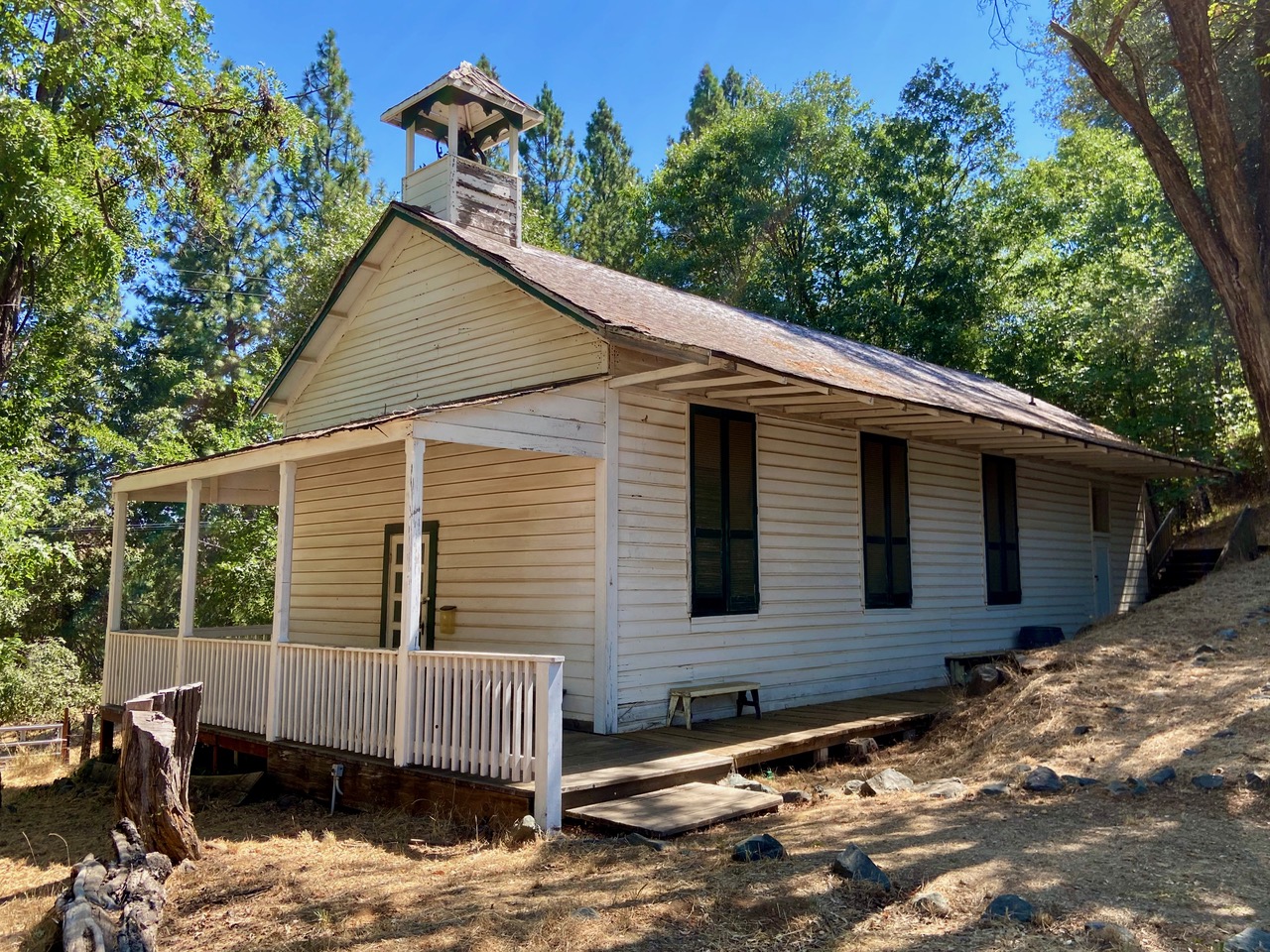Fiddletown: A Hidden Historic Gem
Contributed by Keli Gwyn
If you’ve got a hankering to head out of town, indulge in some history, and have a place pretty much to yourself, Fiddletown would make an excellent destination. Located six miles east of Plymouth, this secluded Gold Rush town is a hidden gem, to be sure.

As you stroll the oak-lined main street on a late summer’s day, admiring the host of historic buildings, imagine yourself surrounded by fun-loving miners seeking entertainment of an evening. With the creeks dry and dusty, local legend says they put down their gold pans and picked up their fiddles, filling the Foothills with their toe-tapping tunes and giving the town its catchy name. The fiddle on top of the Fiddletown Community Hall—reputed to be the world’s largest—gives testament to the town’s music-filled heyday.
Settled by a group of pioneers from Missouri in 1849, Fiddletown began as a sleepy community with a handful of homes. All that changed in 1852 when several rich gold deposits were discovered in the nearby area. The population of Fiddletown surged. Makeshift shelters, along with a number of substantial buildings, soon dotted the landscape.
The boom didn’t last long. With no deep quartz mines to sustain it, many left town when the placers played out. The notable name faded soon after when a so-called judge, Columbus Allen Purinton, embarrassed to say he was from Fiddletown, petitioned to have the name changed to Oleta, after his daughter. Oleta it remained until 1932, when the locals succeeded in convincing the postmaster to reinstate Fiddletown as the official name.

During the Gold Rush, Fiddletown had the largest Chinese population outside of San Francisco. The town’s industrious citizens made valuable contributions to their community. Herbal doctor Yee Fan-Chung operated the Chew Kee Store, famous for being one of the few remaining rammed-earth buildings in the Mother Lode. With its 24-inch thick earthen walls, the long-standing structure showcases the skill of the Chinese workers who built it.
Other buildings of note are the Chinese Gambling House, the General Store, and G. Schallhorn’s Blacksmith and Wagon-Shop. The latter, the biggest and most impressive building in town, was constructed in 1870 from rhyolite tuff blocks from a nearby quarry.

At the east end of the main street, take a right on American Flat Road, climb to the crest of the small hill, and you’ll find the Oleta Schoolhouse. The one-room, eight-grade school, built in 1863 to replace a previous one, served students until 1955. In an ironic twist, the Pioneer Cemetery across the street is the final resting place of Judge Purinton, who didn’t want to be known as “the man from Fiddletown.”
To reach Fiddletown, take Highway 49 to Plymouth. At the roundabout on the north end of town, head east on Shenandoah Road. Take a quick right onto Fiddletown Road and follow it six miles. Park and prepare to take in the sights. If you’re like me, this trek back in time is sure to strike a chord.
